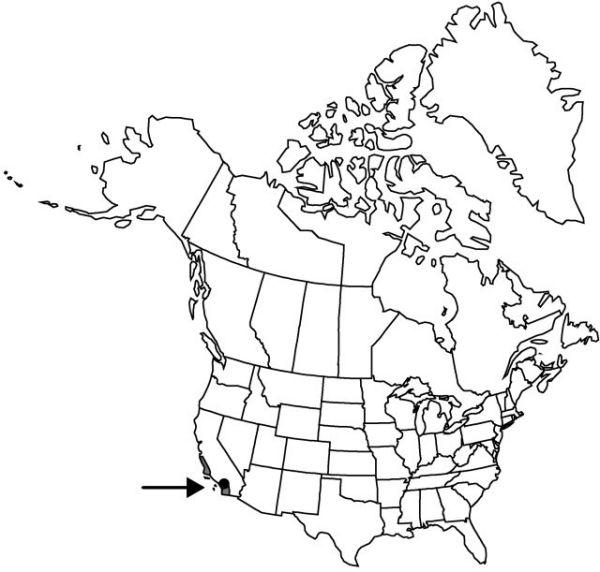Calochortus weedii
Proc. Acad. Nat. Sci. Philadelphia 20: 169. 1868.
Plants usually bulbose; bulb coat fibrous-reticulate. Stems slender, usually branching, 3–9 dm. Leaves: basal withering, 2–4 dm; blade linear to lanceolate. Inflorescences 2–6-flowered; bracts resembling distal cauline leaves. Flowers erect; perianth open, broadly campanulate; sepals ovate to lanceolate, attenuate, 2–3 cm; petals orange-yellow, flecked, broadly cuneate or obovate, ca. 2–3 cm, adaxially bearded with long yellow hairs, margins often red-brown, dentate or fringed; glands round, slightly depressed, ± glabrous, surrounded by ring of long, dense, obscuring yellow hairs; filaments 8–12 mm; anthers lanceolate-oblong, apex acute. Capsules erect, linear, angled, 4–5 cm, apex acute. Seeds light beige. 2n = 18.
Distribution

California, Mexico (Baja California).
Discussion
Varieties 4 (3 in the flora).
Selected References
None.
Lower Taxa
Key
| 1 | Petals deep yellow. | Calochortus weedii var. weedii |
| 1 | Petals purplish or cream to red-brown. | > 2 |
| 2 | Petals purplish, apex rounded; anther apex rounded. | Calochortus weedii var. intermedius |
| 2 | Petals usually cream or red-brown, never purplish, apex squarish; anther apex abruptly apiculate. | Calochortus weedii var. vestus |